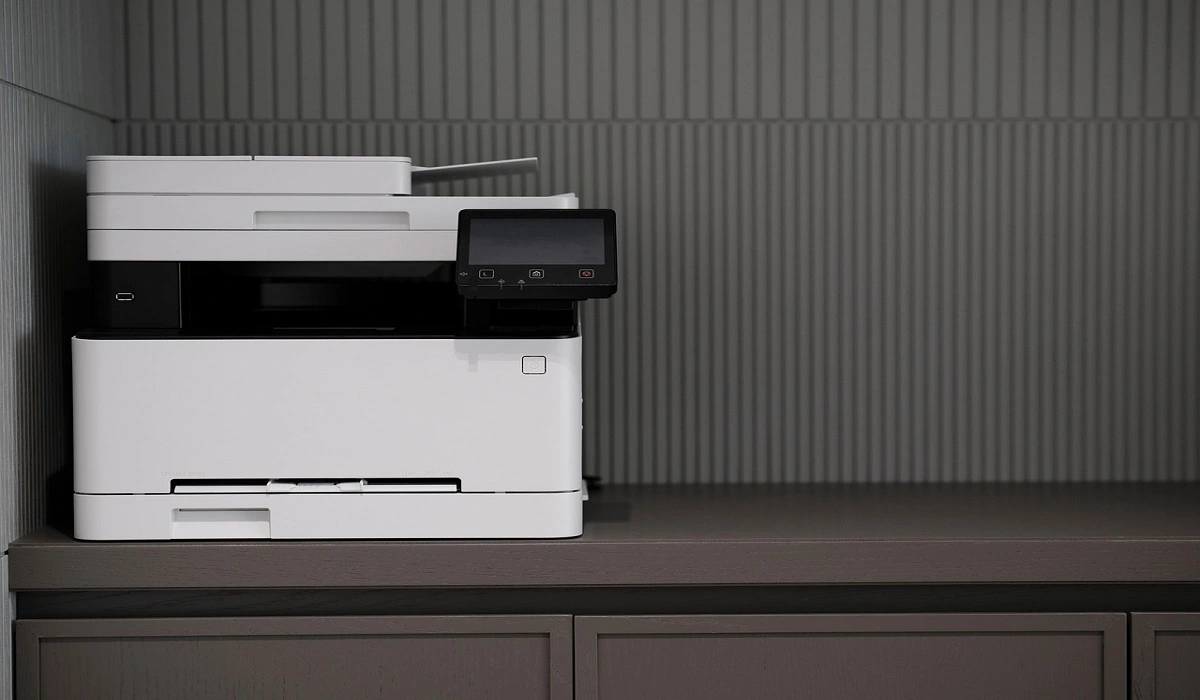How To Uninstall Third-Party Antivirus Software on Windows: Complete Removal
Removing antivirus software from your Windows computer can sometimes be tricky. Isn’t it? Well, many third-party antivirus programs embed themselves deep in your system. They don’t always uninstall completely with regular methods. Don’t worry. This guide will help you fully remove any antivirus software from your Windows PC.
When you need to uninstall third-party antivirus software from Windows, you need the right steps. Maybe you want to switch to a different security solution. Or perhaps you’re facing conflicts with your current antivirus program. Whatever your reason, this guide covers all methods to remove antivirus software from Windows completely.
Knowing how to properly uninstall third-party antivirus software Windows matters for your computer’s health. Many users struggle with leftover files and registry entries after a standard uninstall. These remnants can cause system slowdowns or conflicts with new security software.
Our guide ensures you can fully remove any third-party antivirus program from your Windows system.
Part 1: Why You Should Uninstall Third-Party Antivirus Software
There are several good reasons to uninstall third-party antivirus software from your Windows computer. Windows now comes with its own security solution called Windows Defender (or Microsoft Defender). This built-in protection works well for most users.
When you remove antivirus software that’s third-party, you might actually improve your computer’s performance since many antivirus programs use significant system resources.
Another common reason to uninstall antivirus software on Windows is when switching to a different security solution. Having multiple antivirus programs running at once can cause serious conflicts. These conflicts might slow down your computer or cause system crashes. Before installing new security software, you should completely remove your existing antivirus program from your Windows system.
Part 2: Disadvantages Of Removing Third-Party Antivirus Programs
While there are benefits to removing third-party antivirus software from Windows, you should also consider some potential drawbacks before you uninstall your antivirus protection.
- Windows Defender may not offer the same level of protection as premium third-party antivirus software for advanced threats.
- Some third-party antivirus programs include extra features like VPN services or password managers that you’ll lose when you uninstall them.
- Removing antivirus software without installing an alternative leaves your system temporarily vulnerable to threats.
- Certain specialized third-party antivirus tools offer better protection for specific activities like online banking.
- The uninstall process itself might temporarily weaken your security posture.
- Some antivirus programs leave registry entries even after uninstall, which can cause system issues.
- Without proper removal, remnants of uninstalled antivirus software can conflict with future security programs.
Part 3: Precautions To Take Before Uninstalling
Before you remove antivirus software from your Windows system, take these important precautions to protect your computer and data.
- Create a system restore point so you can revert changes if something goes wrong.
- Save your essential files to an external drive or upload them to cloud storage.
- Download the official uninstaller tool from your antivirus provider’s website if available.
- Temporarily disconnect from the internet during the uninstall process to prevent potential vulnerability.
- Make sure you have the installation files or license key for your new security solution ready.
- Ensure all active programs are closed before initiating the uninstallation process.
- Restart your computer before beginning to ensure no background processes interfere.
- Check if your antivirus software has any special uninstall instructions on the manufacturer’s website.
Part 4: Quick Guide: Uninstall Third-Party Antivirus Software Windows
There are several ways to uninstall third-party antivirus software from your Windows computer. The most common methods include using the Windows Settings app, Control Panel, or dedicated uninstaller tools. Each approach has its advantages, and some antivirus programs may require specific removal techniques.
For complete removal, you might need to try multiple methods. Some antivirus programs create deep system integrations that make them difficult to fully uninstall.
The Manual Methods:
Method 1: Using Windows Settings
Windows Settings offers a simple and intuitive method to uninstall third-party antivirus software. By navigating to the “Apps” section under “Settings,” users can locate the antivirus program and initiate its removal. This built-in tool is designed to handle the uninstallation of various applications, including most antivirus programs, making it a convenient choice for users who prefer an integrated approach.
However, it’s worth noting that using Windows Settings might not always ensure the complete removal of all components associated with the antivirus software, such as residual files or registry entries. In such cases, manual cleanup or specialized uninstallation tools may be required to fully eliminate remnants and prevent potential conflicts or performance issues.
Here’s how to remove antivirus software Windows:
Step 1: Click the Start button and select Settings. Choose Apps> Installed Apps. Find your antivirus program in the apps list.

Step 2: Tap the three-dot icon next to it. Now select Uninstall. Follow the on-screen prompts. Restart your computer when finished
Method 2: Using the Control Panel
The Control Panel provides an alternative method to remove third-party antivirus software from Windows. Accessing this option involves navigating to the “Programs and Features” section, where users can locate and uninstall their antivirus program. This approach may be particularly effective for older antivirus software that does not integrate smoothly with the more modern Settings app, offering a reliable solution for software removal.
Moreover, using the Control Panel can be helpful in situations where the antivirus program’s own uninstaller fails or encounters errors. It ensures a thorough uninstallation process, potentially eliminating residual files or registry entries left behind. This method reinforces compatibility across different antivirus versions and gives users greater control over maintaining their system’s security and performance.
Here’s how to remove antivirus software Windows:
Step 1: Open Control Panel. Go to Programs > Programs and Features. Find your antivirus software in the list.

Step 2: Right-click on it and select Uninstall. Follow the uninstall wizard instructions. Restart your computer after completion
Method 3: Using the Antivirus Program’s Uninstaller
Many antivirus companies offer dedicated uninstaller tools specifically designed to fully remove their software from Windows systems. These tools are highly effective at erasing all traces of the antivirus program, including hidden files, registry entries, and other components that standard uninstallation methods might overlook. They are tailored to handle even stubborn remnants, ensuring a clean and thorough removal process.
Using these proprietary tools can also prevent potential issues such as conflicts with other software or performance slowdowns caused by leftover components. For users facing difficulties with traditional uninstallation methods or wanting to ensure complete removal, these specialized tools provide a reliable and efficient solution.
Steps:
Step 1: Visit the antivirus company’s official website. Look for the Support or Downloads section. Find and download their official uninstaller tool.

Step 2: Run the tool with administrator privileges. Follow all prompts carefully. Restart your computer when the process completes
Method 4: Using Safe Mode
For antivirus programs that resist standard uninstallation methods, using Safe Mode can be an effective solution. Safe Mode launches Windows with only the most essential drivers and services, preventing the antivirus software from running in the background. This environment makes it easier to uninstall stubborn programs, as their processes are no longer active or interfering with the removal process.
To access Safe Mode, users can restart their computer and select the appropriate option from the Advanced Startup Settings. Once in Safe Mode, they can proceed to uninstall the antivirus software through the Control Panel or another suitable method. This approach ensures a smoother uninstallation and minimizes potential conflicts during the process.
Steps:
Step 1: Press Windows key + I to open Settings. Go to System > Recovery. Under Advanced startup, click “Restart now.”

Step 2: After restarting, choose Troubleshoot > Advanced options > Startup Settings > Restart. Press F4 to start in Safe Mode. Once in Safe Mode, use Method 1 or 2 to uninstall the antivirus. Restart normally after completion
Using Third Party Tool
Sometimes manual methods aren’t enough to completely remove antivirus software from Windows. Third-party uninstaller tools can find and delete leftover files and registry entries that standard uninstallers miss. These specialized tools scan your system for remnants after the main uninstall is complete.
Popular options include Revo Uninstaller, IObit Uninstaller, and Geek Uninstaller. These programs create detailed logs of all changes made during the original installation and ensure nothing gets left behind when you uninstall third-party antivirus software.
Steps:
Step 1: Download and install a trusted third-party uninstaller tool. Run the tool and select your antivirus program from the list.

Step 2: Follow the advanced uninstall process, making sure to remove all leftover files and registry entries when prompted
Author’s Tip
To uninstall antivirus software, it’s always a good idea to first grab the latest version of the removal tool provided by the antivirus company. Brands like Norton, McAfee, and Kaspersky offer specialized tools that can clean up their software better than a basic uninstaller. These tools ensure no leftover files or entries slow down your system.
If you’re planning to reinstall the antivirus later, don’t forget to jot down your license key beforehand. Having it handy will save you the hassle of searching for it later or reaching out to customer support. A little prep goes a long way!
Conclusion
Knowing how to properly uninstall third-party antivirus software on Windows is an important skill for maintaining your computer. Whether you’re switching security solutions or troubleshooting conflicts, complete removal ensures your system runs smoothly. The methods we’ve covered help you remove antivirus software from Windows thoroughly.
Remember that after you uninstall antivirus software, your Windows system needs protection. Make sure Windows Defender is active or install your new security solution immediately. Don’t leave your computer unprotected for long periods. Always verify that the uninstall process completed successfully by checking for leftover files or processes.
With this guide, you now have all the tools needed to uninstall third-party antivirus software from your Windows computer. Each method has its strengths, and you might need to combine approaches for stubborn programs. Take your time, follow the steps carefully, and your system will be ready for whatever security solution you choose next.
FAQs:
Can I just install a new antivirus without uninstalling the old one?
No, you should always uninstall third-party antivirus software before installing a new one. Having multiple antivirus programs running simultaneously can cause serious conflicts. These conflicts may result in system crashes, performance issues, or even leave security gaps. Always completely remove antivirus software from Windows before installing a replacement.
Will uninstalling my antivirus software leave my computer vulnerable?
Yes, temporarily. When you remove antivirus software, your computer lacks protection until you activate an alternative. However, Windows Defender automatically activates when no other antivirus is present on Windows systems. Still, minimize the time between uninstalling your old antivirus and installing or activating a new security solution.
Why does my computer still show traces of my antivirus after uninstalling?
Standard uninstall methods sometimes leave remnants when you remove antivirus software from Windows. Antivirus programs often create deep system integrations and scattered files. You might need specialized uninstaller tools or the antivirus vendor’s removal tool for complete uninstallation. These tools can find and remove leftover files, registry entries, and hidden components.
Popular Post
Recent Post
Software Performance Optimization Tips: Complete Guide
Software often slows down over time, turning once-fast programs into frustrating delays. While many assume their device is outdated, the real issue often lies in how the software runs. With a few simple habits and checks, users can restore speed and avoid costly upgrades. This guide offers clear, beginner-friendly software performance optimization tips. It covers […]
How To Connect a Scanner to Your Device Windows 11 In 2026
Have you ever needed to scan a document in a hurry and did not know how to begin? Many people face this problem when they buy a new scanner or a new computer. Windows 11 includes helpful tools that make the process easy, but you must know the right steps. This guide explains each method […]
How To Connect to Your PC Remotely Windows [Complete Guide]
Many people need to reach their computer from far away. Well, yes! It may be for work, study, or personal use. Remote access helps you open files, use your apps, and control your system even when you are not near the device. It gives you the comfort of using your computer anywhere through the internet. […]
How To Connect to a Wi Fi Using a QR Code: Latest Guide
Wi-Fi is now a basic part of our lives. We use it at home, in offices, schools, and public places. But typing long passwords every time you connect can be annoying. Sometimes you might even forget your Wi-Fi password. That is where QR codes come in handy. With QR codes, you can connect to any […]
How To Connect a Wireless Printer Easily to Windows 11/10 PC
Printing tasks are part of most home and office work today. Isn’t it? Well, yes! Using a wireless printer makes printing easier and faster because you don’t need cables. It allows you to print documents and images from any corner of your room as long as your device and printer are connected to the same […]
How To Connect Your Windows 11 PC to a Projector or Another PC
A bigger screen can help you share your work with others. When you connect your Windows 11 PC to a projector, your screen becomes easier to view in a meeting room, classroom, or home. You can show slides, videos, notes, or entertainment. Most people do this for work or study, but it is also helpful […]
How To Set Up Dual Monitors Easily Windows 11/10: Complete Guide
Working with one screen can feel limiting. You switch between apps constantly. Your workflow slows down. A dual monitor setup changes everything. It gives you more space to work. You can see multiple things at once. This guide shows you how to set up dual monitors easily on Windows systems support. Windows 11 and Windows […]
How to Set Your Preferred Default Printer On Windows 11/10: Complete Guide
Printing documents should be simple. But many users struggle with their printer settings. Windows often picks the wrong printer as the default. This creates delays and wastes paper. Setting up your preferred printer as the default saves time. It prevents printing errors. This guide shows you how to set your preferred default printer Windows systems […]
Ashampoo WinOptimizer Review: Can It Really Speed Up Your PC?
Is your computer running slowly? Do programs take forever to load? You’re not alone. Millions of PC users face this problem daily. Ashampoo WinOptimizer claims it can fix these issues. This software promises to clean junk files, boost speed, and make your computer run like new. But does it really work? Or is it just […]
Screen Mirroring | Screen Cast Phone to Laptop Windows 11
screencast phone to laptopScreen mirroring is a great way to show your phone’s screen on a laptop. Right? Whatever you see on your phone, videos, games, apps, it shows up on the bigger screen too. It’s great for watching with friends, sharing ideas, or just getting a better view. Lots of people think it’s hard […]



























